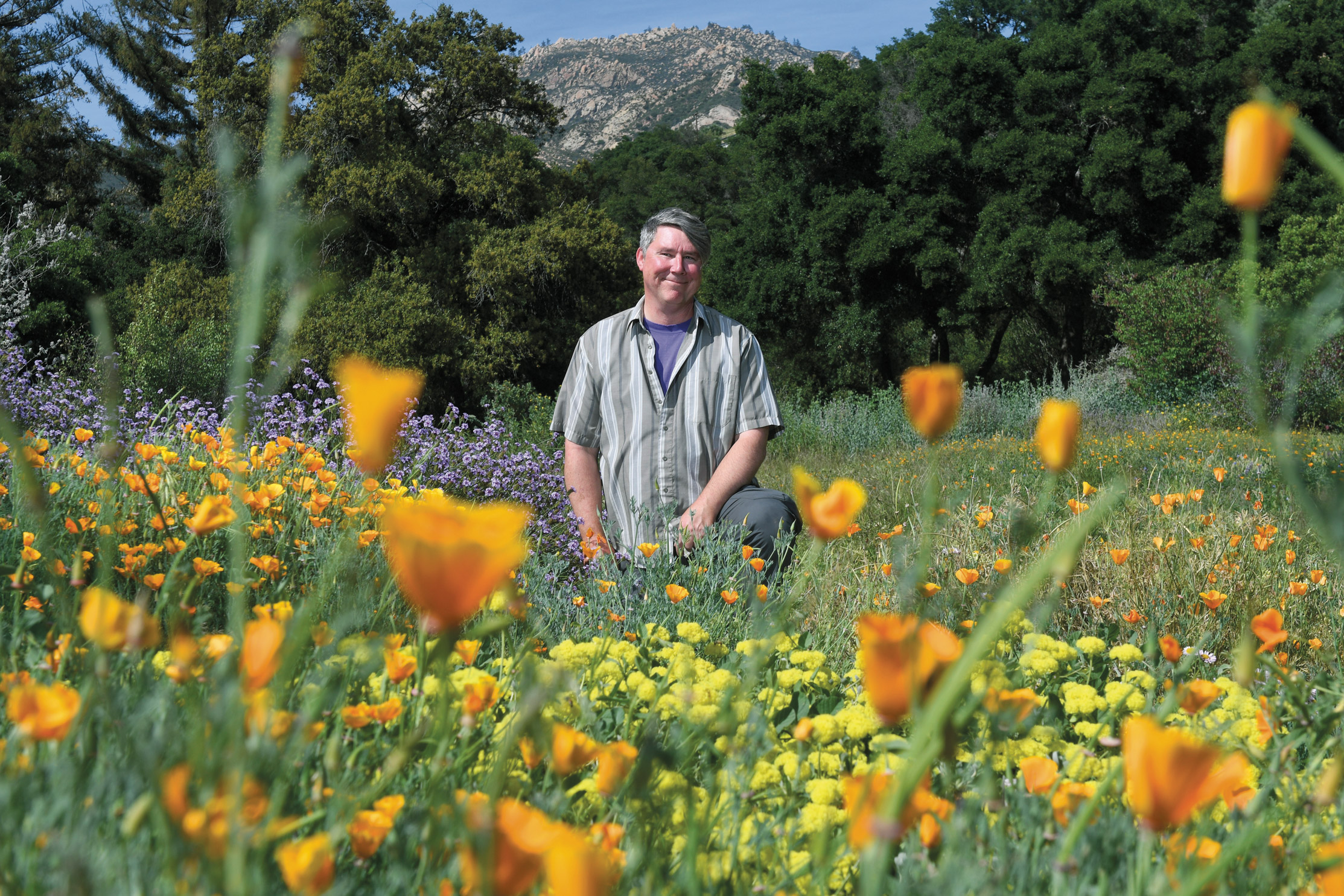Santa Barbara Botanic Garden’s Water-Wise Ways
Taking an Eco-Friendly Approach to Watering Native Plants

Are you a gardener seeking to cut down on water bills, conserve precious reservoir water, and beautify your home? Consider visiting the Santa Barbara Botanic Garden’s (SBBG) new Water-Wise Home Garden, a drought-resistant plant panoply of colorful California natives. The garden surrounds the original caretaker’s cottage, a Sears Roebuck kit house constructed in 1926, adjacent SBBG’s nursery, where many of the plants on display may be taken home to make your own water-wise showpiece.
SBBG staff researched 90 years of growing history to come up with the plants on display, said Flannery Hill, SBBG’s marketing and membership manager. A group of staff nurserymen and staff, including SBBG Horticulturist Bruce Reed and Executive Director Dr. Steve Windhager, consulted with area gardeners to come up with an “Easy 8” — a set of natives that play well with other plants (aesthetically and spatially) and are widely adaptable to a variety of Californian climates. It’s not a no-water garden, but it’s certainly a less-water garden. “We’re trying to convince people that you can have beauty and attract wildlife and save water without some of the challenges of other natives,” Hill said.

Natives have other advantages, too, like attracting native pollinators. “We all want to move away from pesticides, and wildlife provides natural pest management,” she said. The more your garden resembles a native ecosystem, the more it takes care of itself. “Lizards and birds eat the aphids and white flies. They work in concert. They’re a benefit to your vegetables.”
Hill recommends putting your native plants in a rain-garden landscape — that is, a basin or series of basins designed to capture and filter rain from hard surfaces like driveways and roofs. Shape a sort of stream or depression en route to and through your garden, where it will drain rainwater into your soil instead of a gutter. As another water-wise step, the demonstration garden also boasts a storm-water collection tank, an effective way of conserving during the sometimes-scorching summer months.
Lastly, growing native plants benefits local ecosystems by reducing the incidence of invasive species. Even plants from Northern California “have an infinitesimally [lower] chance of becoming a weed,” she said. She encourages gardeners to steer away from the usual showpieces and strive for specimens that are from our home state. “They’re a slice of California; they’re different; they’re unique — they’re ours.”



